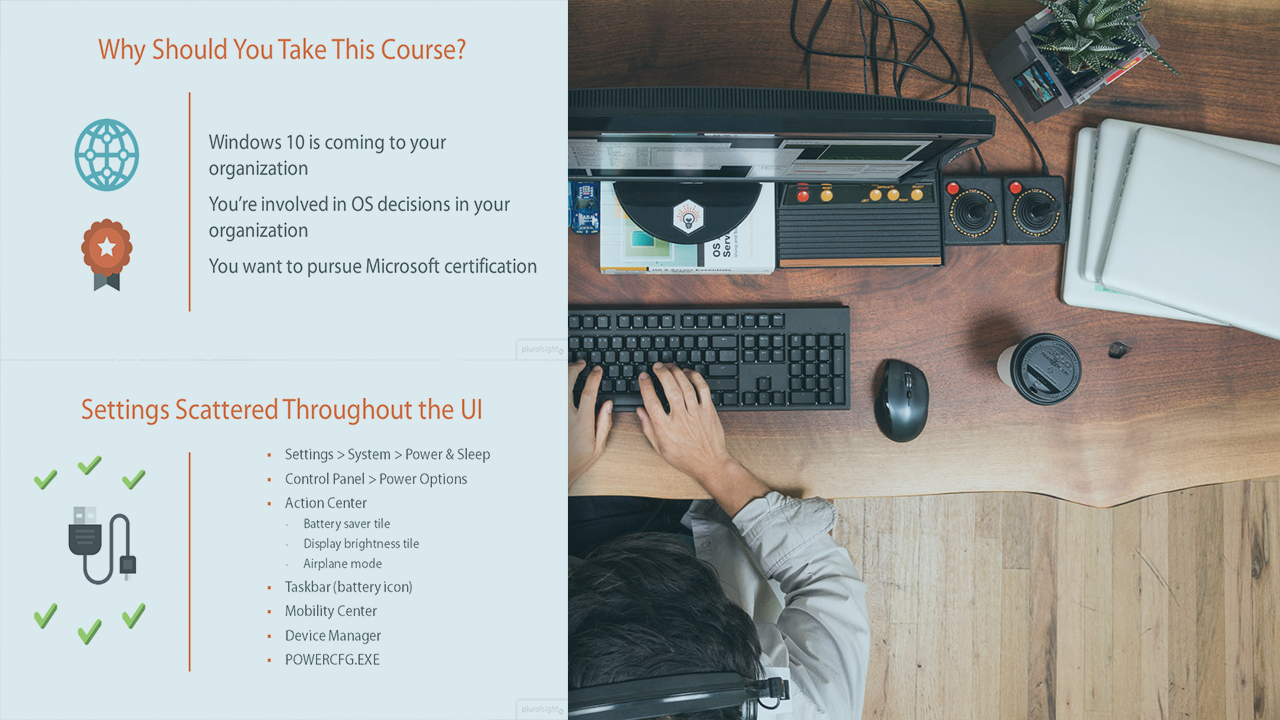- Course
Configuring Windows 10 Devices: Manage Remote Access
Windows 10 supports many remote access capabilities. This course explains Remote Desktop, VPNs, DirectAccess, Offline Files, and other features essential to remote users, such as power options.

- Course
Configuring Windows 10 Devices: Manage Remote Access
Windows 10 supports many remote access capabilities. This course explains Remote Desktop, VPNs, DirectAccess, Offline Files, and other features essential to remote users, such as power options.
Get started today
Access this course and other top-rated tech content with one of our business plans.
Try this course for free
Access this course and other top-rated tech content with one of our individual plans.
This course is included in the libraries shown below:
- Core Tech
What you'll learn
Employees are more mobile than ever and telecommuters, contractors, and field personnel have several ways to use Windows 10 to connect to their corporate networks. This course, Configuring Windows 10 Devices: Manage Remote Access, explains the technologies available to users who are away from their home office. First, you will learn about removing access options from PC-to-PC solutions like Remote Desktop to PC-to-network solutions like VPNs and DirectAccess. Next, you will dive into configuring remote systems for online and offline use. Finally, you'll address common concerns such as power management, metered connection management, and broadband tethering. When you’re finished with this course, you will have the skills and knowledge to configure Windows 10 devices for remote access.

